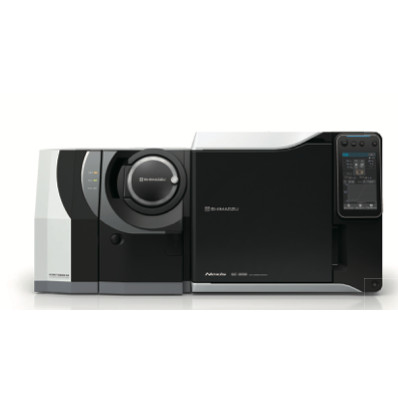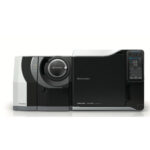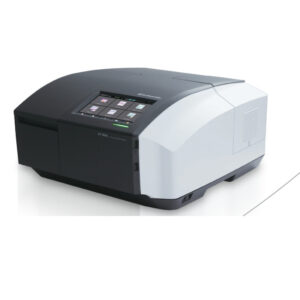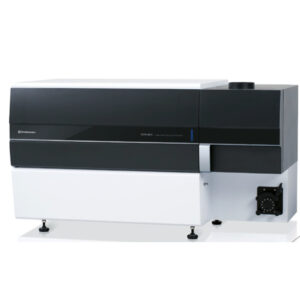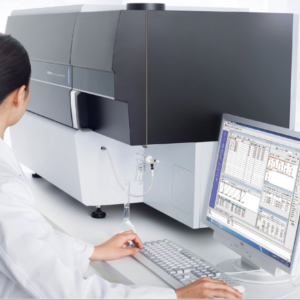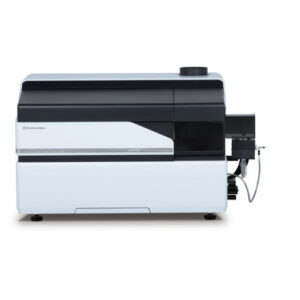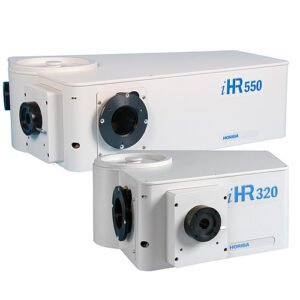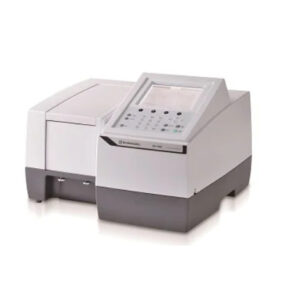Gas Chromatograph Mass Spectrometer GCMS-TQ8050 NX Ultra-High-Sensitivity Triple Quadrupole GC-MS for Pioneering New Fields
Equipped with a new, highly efficient detector and three forms of noise-reduction technologies, the GCMS-TQ8050 NX is capable of performing unprecedented quantitative analyses of ultra-trace amounts, down to the femtogram level.
Moreover, with its ultra-high sensitivity and high mass resolution, a whole new realm of quantitative analysis is offered, with reduced long-term operational costs and greater uptime.
- Description
- Additional information
Description
HIGHLIGHTS
Updating…
| Gas Chromatograph | |
| Model | Nexis TM GC-2030 |
| Oven Temperature | Ambient + 2 to 450 °C |
| Retention Time Repeatability | <0.0008min |
| Flow Control | Constant flow, constant pressure, constant liner velocity |
| Injection Port Temperature | Ambient to 450 °C |
| AFC Pressure Range | 0 to 1035 kPa |
| Peak Area Repeatability | <1% RSD |
| Oven Ramp Rate | Max 120℃/min |
| Mass Spectrometer | |
| GCMS Interface | |
| Type | Direct connection with capillary column |
| Temperature | 50 to 350 °C |
| Ion Source | |
| Type | Front access for easy maintenance |
| Ionization | EI (standard) EI, PCI, NCI (optional) |
| Filament | Dual, automatic switching with shield placed between filament and source box (patented) |
| Electron Energy | 10 to 200 eV |
| Emission Current | 5 to 250 µA |
| Vacuum System | |
| Main Pump | Dual inlet turbo molecular pump 190 L/second + 170 L/second (He) |
| Fore Pump | Oil rotary pump, 30 L/minute (60 Hz) (Oil free pump, 110 L/minute (60 Hz)) |
| Column Flow | 10 mL/minute (He) |
| Mass Analyzer and Detector | |
| Mass Analyzer | Metal quadrupole mass filter with pre-rods |
| Collision Cell | UFsweeper, 0 to 60 eV Argon collision gas |
| Mass Range | m/z 10 to 1090 |
| Mass Resolution | 0.4 to 3.0 u (FWHM) |
| Mass Axis Stability | ±0.1 u/48 hours (under specified conditions) |
| High-speed Scan Control | ASSP: Advanced Scanning Speed Protocol |
| Scan Rate | 20000 u/second |
| Minimum Event Time | 3 msec (maximum 333 scans/second) |
| Maximum Transitions | 16 transitions/event |
| Maximum Events | 2048 Events |
| Minimum Dwell Time | < 0.5 msec |
| Maximum MRM Speed | 800 MRM transitions/second |
| Detector | Secondary electron multiplier with patented Overdrive Lens and conversion dynode 8 × 10 6 dynamic range |
| GC-MS unit | 110 kg |
| auxiliary pump | 10 kg |
| Enhanced Sensitivity |
| To maximize the benefits of the Off-Axis Ion Optics, the system features three noise-reduction technologies and a detector with improved amplification performance. Due to these state-of-the-art technologies, the system can reliably detect ultra-trace femtogram-level quantities of ions. The resulting exceptional analytical sensitivity and robustness increase the value of solutions and open the door to new applications |
| Durable Hardware |
| In addition to ultra-high sensitivity, the GCMS-TQ8050 NX also offers high robustness. The contamination-resistant ion source and the new detector with over five times longer service life ensure that analysis can be performed reliably for a long time. With the ultra-high-sensitivity performance of the GCMS-TQ8050 NX, injection volumes can be reduced even further than before. The service life of inserts, columns, and other consumables can also be extended to reduce maintenance frequency and costs |
| Superior Performance |
| A new turbomolecular pump with higher evacuation performance achieves a superior vacuum state in the MS unit, which also provides high sensitivity in the single GC-MS mode. With the high-efficiency collision cell (UFsweeper) installed as before, high-sensitivity detection is possible even when mass resolution is increased. The new active-time management function achieves further operating efficiencies by appropriately managing the wait times that occur during maintenance, while switching systems, or when the system is used by multiple users, to extend the operating time |
| Reliable Operation |
| The Smart DatabaseTM series, which are specialized for various fields, and Smart MRMTM function, which optimizes sensitivity, can be used to accurately create methods for ultra-trace analysis and reliably achieve high-sensitivity analysis from MRM measurements. LabSolutions InsightTM software, designed to support quantitative analysis of multianalyte data, enhances the throughput of data analysis from simultaneous analysis of multiple components in trace concentrations. The extensive accuracy control functions enable decisions to be made based on the easy-to-understand visualization of quantitative analysis and accuracy control results. |
| Inert Flow Path Achieves High-Sensitivity GC/MS Flow Path |
| Minimizing adsorption and other losses in the flow path from sample injection to the detector is important for stable, high-sensitivity measurements using GC/MS. The flow lines in the GCMS-QP series and the TQ series consist of high-quality, highly reliable consumable parts, so even trace concentrations of components can be detected with high sensitivity and favorable repeatability. |
| Power supply | |
| Frequency | 50/60 Hz |
| For GC | Single phase 100 V AC, 115 V AC 1800 VA Single phase 230 V AC 2600 VA (for high-powered oven) |
| For MS | Single phase 100 V AC to 240 V AC 1000 VA |
| Voltage fluctuation | Operating power voltage range ±10 % Specification power voltage range ±5 % |
| Installation Category | Overvoltage Category II (IEC) |
| Protection Class | Class I (IEC) |
| Short-circuit Current Rating | 1000 A |
| Ground registance | 100 Ω or less Connect the GC, MS, computer, and optional power supply to an equipotential ground. |
| Environmental requirements | |
| Temperature range | 15 °C to 35 °C (Constant temperature from 18 °C to 28 °C for performance) |
| Humidity range | 5 % to 90 % (40 % to 70 % for performance) |
| exhaust duct | |
| Dust, vibrations, spatial noise and corrosive gases should be also avoided. | |
| Altitude | 2000 m max. |
| Pollution degree | Pollution degree 2 (IEC) |
Updating…
| DI Probe (Option) |
| Temperature: Room temperature to 500 °C |
| AOC-6000 Multifunctional Autosampler system |
| The AOC-6000 supports three sample injection methods: liquid sample injection, headspace (HS) injection, and solid phase micro extraction (SPME) injection, so samples in a variety of forms can be analyzed. It allows the sample injection method to be switched automatically, enabling different sample injection methods to be combined in a continuous operation. With the automatic syringe exchange and stirring function, standard samples can be prepared automatically with a variety of dilution levels, and everything from the creation of calibration curves to the quantitative determination of unknown samples can be fully automated. |
| HS-20 Headspace Analysis System |
| The HS-20 headspace sampler provides strong backup for the analysis of volatile components at every stage from research to quality control departments. The high-sensitivity electronic cooling trap enables quantitative and qualitative determination of trace components that cannot be detected with a conventional headspace sampler. The HS-20 transfer line is built into the GC unit, which makes it easy to combine the HS-20 with the AOC-20 liquid sample injector, as well as to switch between these units. |
| OPTIC-4 Multimode Sample Inlet System |
| The OPTIC-4 multimode sample inlet is a GC injection port that enables a variety of sample injection modes for GC-MS, including large-quantity injection, inlet derivatization, thermal desorption, and DMI (difficult matrix introduction). Combining this with an autosampler enables automatic replacement of inserts, improving productivity in multisample analyses. |
| TD-30 Thermal Desorption System |
| Thermal desorption systems heat samples in a sample tube and then concentrate the thermally desorbed gases before injection into a GC-MS. They are commonly used to measure volatile organic compounds (VOCs) in the atmosphere or measure trace components that are generated from plastic or other samples. The TD-30R can accommodate 120 samples for excellent processing capacity and offers outstanding expandability, such as functionality for retrapping components or for automatically adding an internal standard substance |
| GCMSsolutionTM Ver. 4 | |
| Operation Modes: | Q1 Scan, Q3 Scan, Product Ion scan, Precursor Ion scan, Neutral Loss scan, Q1 SIM, Q3 SIM, MRM, Scan/SIM and Scan/MRM FASST (simultaneous Scan/SIM measurements) |
| Energy Savings: | Ecology mode |
| Insert Replacement: | Easy sTop |
| Method Wizard: | Smart MRM/SIM (Automatic SIM, MRM table creation) AART (Automatic Adjustment of Retention Time) |
| Library Search: | Similarity searches using retention indices (Compatible with multiple retention index groups) Up to 10 libraries can be configured |
| Instrument Tuning: | Automatic (EI, CI, NCI) |
| Quality Control: | Accuracy control QA/QC function, instrument control system check function, user control security function |
| Measurement Data Control: | Optimal compound structure format for GLP |
| Maintenance Support: | MSNAVIGATOR |
| Report: | Flexible report creation, templates |
| Multisample Quantitation Assistance: | LabSolutions InsightTM |
| Library (optional): | NIST, Wiley, FFNSC Library (Flavor and Fragrance) |
| Database (optional): | Smart Pesticides DatabaseTM Smart Forensic DatabaseTM Smart Metabolites DatabaseTM Smart Environmental DatabaseTM |
| Semi-quantitative database (optional): | Quick-DBTM for residual pesticide analysis Quick-DBTM for forensic toxicological analysis Off-Flavor Analyzer |
| Composition Estimation (optional): | MassWorks |
Additional information
| Manufacturer | Shimadzu |
|---|---|
| Origin | Japan |
| Type | Automatic |

